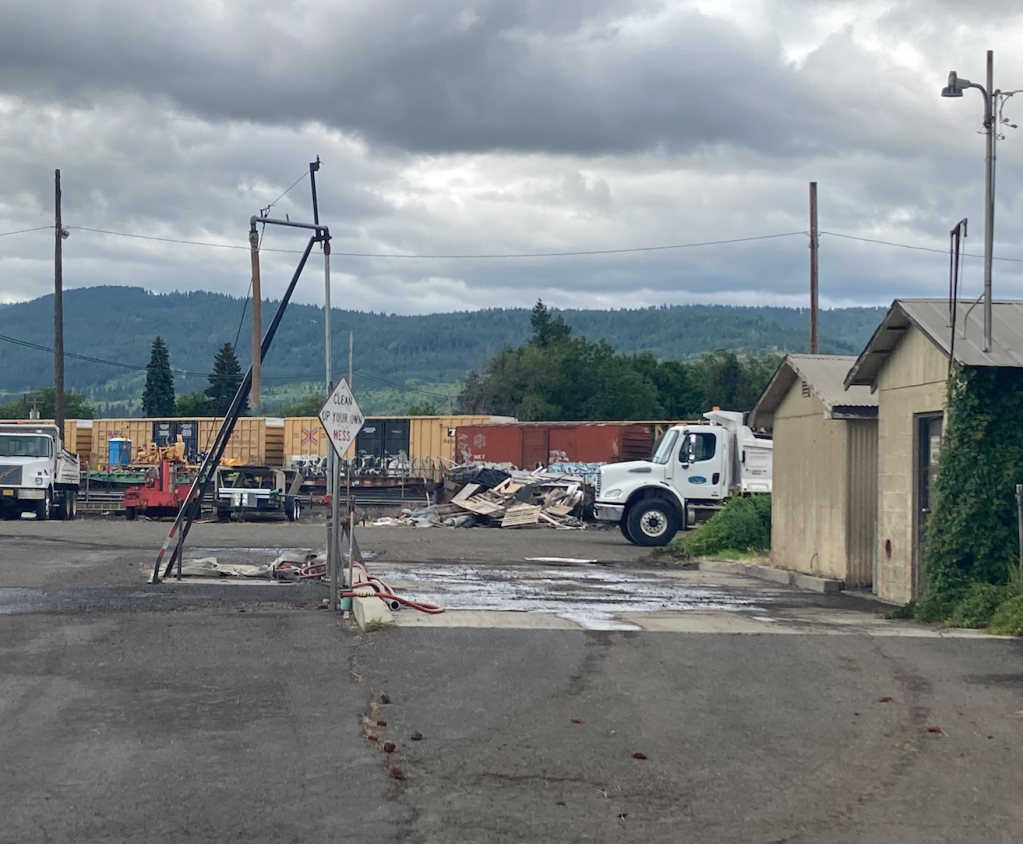B2H proposal includes using millions of gallons from La Grande water
Published 6:15 am Thursday, July 9, 2020

- The Idaho Power Co. could use as much as 8 million gallons of water from La Grande for the construction of the Boardman-to-Hemingway power line. The project would pull water from La Grande Public Works using this overhead pump and fill trucks for the water needs. The power company is working on its proposal for the water, which the city says will not have a negative affect on residents.
LA GRANDE — Idaho Power Co. is seeking to use as much as 8 million gallons of water from the city of La Grande to build its massive Boardman-to-Hemingway power line.
“This would be spread out over a course of around three years and used gradually,” Sven Berg, communications specialist for Idaho Power said. “The 8 million figure is the worse-case scenario in high use. It is more likely we will use 5.4 million gallons.”
La Grande Public Works Director Kyle Carpenter said it takes about two days for the city to pump 8 million gallons of water, so he is not concerned about residents experiencing a water shortage.
As part of Idaho Power’s application for the project, the company submitted a 32-page document in 2018 detailing water use for all affected areas in Oregon. The project could use as much 54.8 million gallons from five cities — La Grande, Boardman, Pendleton, Baker City and Ontario. All of the cities confirmed they could meet the company’s water needs.
The total of nearly 55 million gallons is the most Idaho Power is seeking. The company has estimated a minimum closer to 36.6 million gallons over three years of construction, starting in 2023 and finishing by 2026. That amount of water is equivalent to the use of 83 families during the same span of time, according to the application.
“Major water uses are for transmission line structure foundations and station foundations, access road construction, dust control during right-of-way clearing, station grading and site work and re-seeding restoration work among project completion,” the application stated. “A minor amount of water will be used to establish station landscaping where required during construction.”
Drilling and fire prevention may also require minor amounts of water.”
The use of water for these purposes is something the city of La Grande allows, Carpenter said.
The B2H project is a proposed 500-kilovolt transmission line that will run approximately 290 miles across eastern Oregon and southwestern Idaho. It would connect the proposed Longhorn Substation 4 miles east of Boardman to Idaho Power’s existing Hemingway Substation in Owyhee County, Idaho, and run through the Grande Ronde Valley as part of its construction. If alternative routes for the 500-kilovolt power line are selected, La Grande would see a smaller request for water, perhaps as much as 3.9 million gallons or as little as 2.6 million.
Idaho Power is working on its proposal to tape into La Grande’s water, a city requirement for organizations wanting to use water outside the city limits. Carpenter said the city is ready should that request come in.
The cost of water is different for residential and business uses. Residential use involves a tiered system where after 5,000 gallons at around $25 a resident can expect to pay 22 cents per extra 100 gallons. Water use for construction has a flat rate averaging 40 cents per 100 gallons. If Idaho Power ends up needing the full 8 million gallons, the company is looking at paying the city approximately $32,000 for the water.
The group StopB2H, which is against the construction of B2H, contended the problems with the line are bigger than water usage. Jim and Fuji Kreider said the issues with the line are more about how it will disturb the surroundings.




